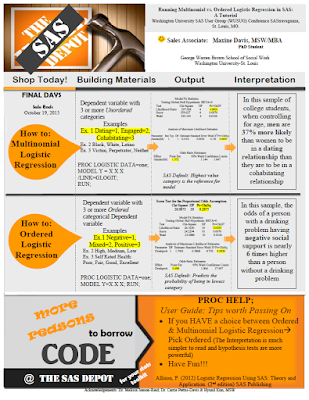Latest modern science | Critique: Notorious DRG - Si Bejo Science
critiquesThis week�s contribution is from Zach Sperry, who gave me permission to share his poster from the 2015 Neuroscience meeting. Click to enlarge!
Nobody should be embarrassed by a poster like this. The core design of this poster is solid. It�s a clean, three column layout that leaves no doubt as to how it should be read.
But... there is a lot going on in this poster. It might have benefited from the four tips on shortening posters I had just a few weeks ago.
Things I might do:
Take the university and lab logos in the title bar out. This would allow you to shorten the author and institutions credits from five lines to maybe two, and make the title bigger.
I cannot emphasize this enough: at big meetings, your title needs to be visible from the moon. Big meetings set poster boards far apart to have aisles for people to walk in. And Neuroscience in the biggest of the big. Do not skimp on space for your title!
As journalists say, this poster has buried the lede. The �Goal� statement is crystal clear, but it�s buried at the bottom of the first section, and the italics are not enough of a signal to show its importance. I like the clarity of the �Goal� statement so much that I might just hack that whole section down to that one sentence.
Try shrinking everything by 5-10% and increasing the white space between each individual element.
The text blocks are quite dense and dark. The typeface appears to be plain ol� Arial. I might try a thinner typeface and less bolding to make the text blocks look lighter.
There are quite a lot of bright colours on the poster, with red, green, orange, and blue all making appearances. While the area they cover is small, which generally favours those more intense colours, there are still a lot of them, which contributes to the feeling of business. They make sense in the graphs on the right, but the intense red for labels in the central bottom figure, or to make outlines in the right figure (�Cell bodies (blue pixels) transformed...�) might be a little too much.
Like the introduction, I would like the conclusion to be much tighter. The first of those three paragraphs alone might be enough. It tells you the two key take-home messages:
Nobody should be embarrassed by a poster like this. The core design of this poster is solid. It�s a clean, three column layout that leaves no doubt as to how it should be read.
But... there is a lot going on in this poster. It might have benefited from the four tips on shortening posters I had just a few weeks ago.
Things I might do:
Take the university and lab logos in the title bar out. This would allow you to shorten the author and institutions credits from five lines to maybe two, and make the title bigger.
I cannot emphasize this enough: at big meetings, your title needs to be visible from the moon. Big meetings set poster boards far apart to have aisles for people to walk in. And Neuroscience in the biggest of the big. Do not skimp on space for your title!
As journalists say, this poster has buried the lede. The �Goal� statement is crystal clear, but it�s buried at the bottom of the first section, and the italics are not enough of a signal to show its importance. I like the clarity of the �Goal� statement so much that I might just hack that whole section down to that one sentence.
Try shrinking everything by 5-10% and increasing the white space between each individual element.
The text blocks are quite dense and dark. The typeface appears to be plain ol� Arial. I might try a thinner typeface and less bolding to make the text blocks look lighter.
There are quite a lot of bright colours on the poster, with red, green, orange, and blue all making appearances. While the area they cover is small, which generally favours those more intense colours, there are still a lot of them, which contributes to the feeling of business. They make sense in the graphs on the right, but the intense red for labels in the central bottom figure, or to make outlines in the right figure (�Cell bodies (blue pixels) transformed...�) might be a little too much.
Like the introduction, I would like the conclusion to be much tighter. The first of those three paragraphs alone might be enough. It tells you the two key take-home messages:
- The recording worked.
- We got new information from this recording.




























































